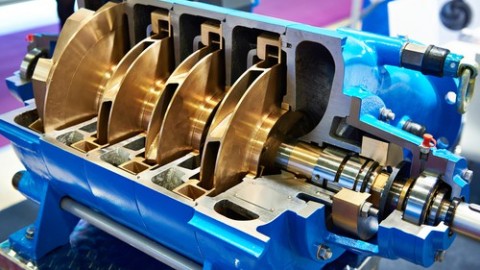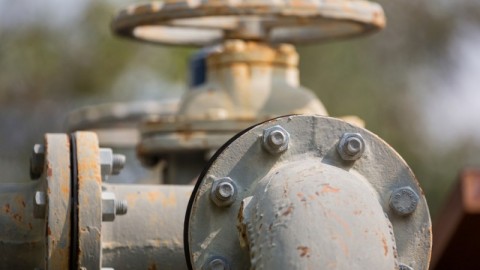By Ron Astall, United Pumps Australia
Everyone wants more efficient pumps and pumping systems. In some industries, the Engineers and system designers create massive stumbling blocks by specifying a maximum allowable pump running speed.
Putting arbitrary limits on running speeds will often preclude the best pump selection.
For clean liquid services, unless there are difficult suction conditions, there is no reason to fix a maximum limit on pump running speed. Energy efficiency has never been more important and yet we are still stuck with these archaic; dare I say ignorant specifications. Why?
Is it because a slow running pump is perceived to have a “smoother” velocity profile, less turbulence and hence ought to be more efficient? As we will see later, this perception is plain wrong.
Is it because a slow running pump is perceived to have inherently lower internal wear, better bearing life and improved reliability? This perception is demonstrably equally untrue.
Could it be for reasons of noise and vibration? Yes, these aspects can be worse with a higher running speed, but not always. If these are the real issues, why not simply specify the allowable noise and vibration limits as direct requirements?
If you have read this far, you may be getting a little grumpy because much of this seems counter intuitive. Ought not a slow running pump be less stressed than a high speed unit? The real question ought to be; will a slow running pump of the same performance be less stressed than a higher speed model doing the same duty? For the same flow and same developed head, a slow speed pump will be larger and will be a different shape than a higher speed unit designed for the same hydraulic duty. We are thus comparing different shaped pumps.
Fig 1 shows a range of impeller shapes versus a pump design parameter called “Specific Speed” (Ns). The formula for Ns is shown in Fig 2.
Ns is primarily a shape factor and this parameter is extremely useful as an aid to understanding why some pumps are more efficient than others.
Here it is. Specific Speed (Ns) is a simple formula involving the RPM, Pump Flowrate at Best Efficiency Point (BEP) and Head per stage at BEP.
In Australia it is most common to use metric units of cubic metres per hour, metres and rpm; however; when comparing pump design data it is important to ensure that you are using the correct units.
It is effectively the same as the dimensionless pump type factor “K” in the test code standards, except “K” uses cubic metres per second as the flow unit.
Legendary pump designer, A.J. Stepanoff created this chart outlining the various components of pump inefficiency and showed how these vary with specific speed (Fig 3).
From Stepanoff’s chart you can see that casing Hydraulic Losses and Disk Friction vary significantly with changes in Specific Speed. In these metric units the best impeller efficiency is around Ns of 3000.
As we saw from Fig 1, low Ns impellers are larger diameter, narrow radial flow units. Higher values of Ns relate to fatter more open shaped impellers. This makes perfect sense because the fatter, more open shaped impellers will have less disk friction as a percentage of the hydraulic work being done by the impeller.
The bottom line is that narrow impellers are less efficient than “fatter” shaped impellers. See Fig 4.
Bearing the above in mind, it makes sense to aim for the best shape impeller when considering what type of pump to select. If you arbitrarily dictate the maximum running speed you may force the pump selection into a low Ns shape and this will mean a more expensive and less efficient pump.
Consider the following pump selections for the same duty but different speeds (Fig 5):
This is a tangible example of how specifying a maximum running speed of 1500 rpm will in this instance cost the end user dearly; not only in capital cost but in total cost of ownership.
Now some of you may be grumbling about reliability, noise and vibration being also important. Yes they are, but look at the size of the casing on the slower running unit, look at how much heavier its impeller must be and look at the greater surface area available to transmit hydraulic noise. In a later discussion I will look at these aspects in more detail and show how the faster running pump can indeed be more reliable and can be potentially quieter.
So what running speed should you specify?
You should not specify the running speed at all!
A great window on this process is the pump vendor’s range chart. A simple suggestion is to always start with the highest speed range chart. If this does not bear fruit, look at the next speed down. If there is a sensible selection at a higher speed it is almost certainly going to be a more efficient pump than a lower rpm unit doing the same duty. To illustrate this, in Fig 6 below I have overlaid a 2980 rpm range chart (in red outline) over a 1470rpm range chart for the same manufacturer. Below the red outline you can see the regions where a 1470 rpm pump is going to be a better selection. Inside the red outline, a 2980 selection ought to be better.
Select on the basis of the hydraulic duty and specify your other primary requirements directly; such as noise and vibration. Then let the pump vendor select the best pump for the job; unrestrained by silly speed constraints. The best speed may be 2980 or 1450, or 980rpm or even lower. It depends on your hydraulic conditions.
But what about multi-stage pumps and what about the impact of running speed on suction conditions? I will talk about these issues next time.
Next article: Are your pumps running too slowly? – the sequel.






















